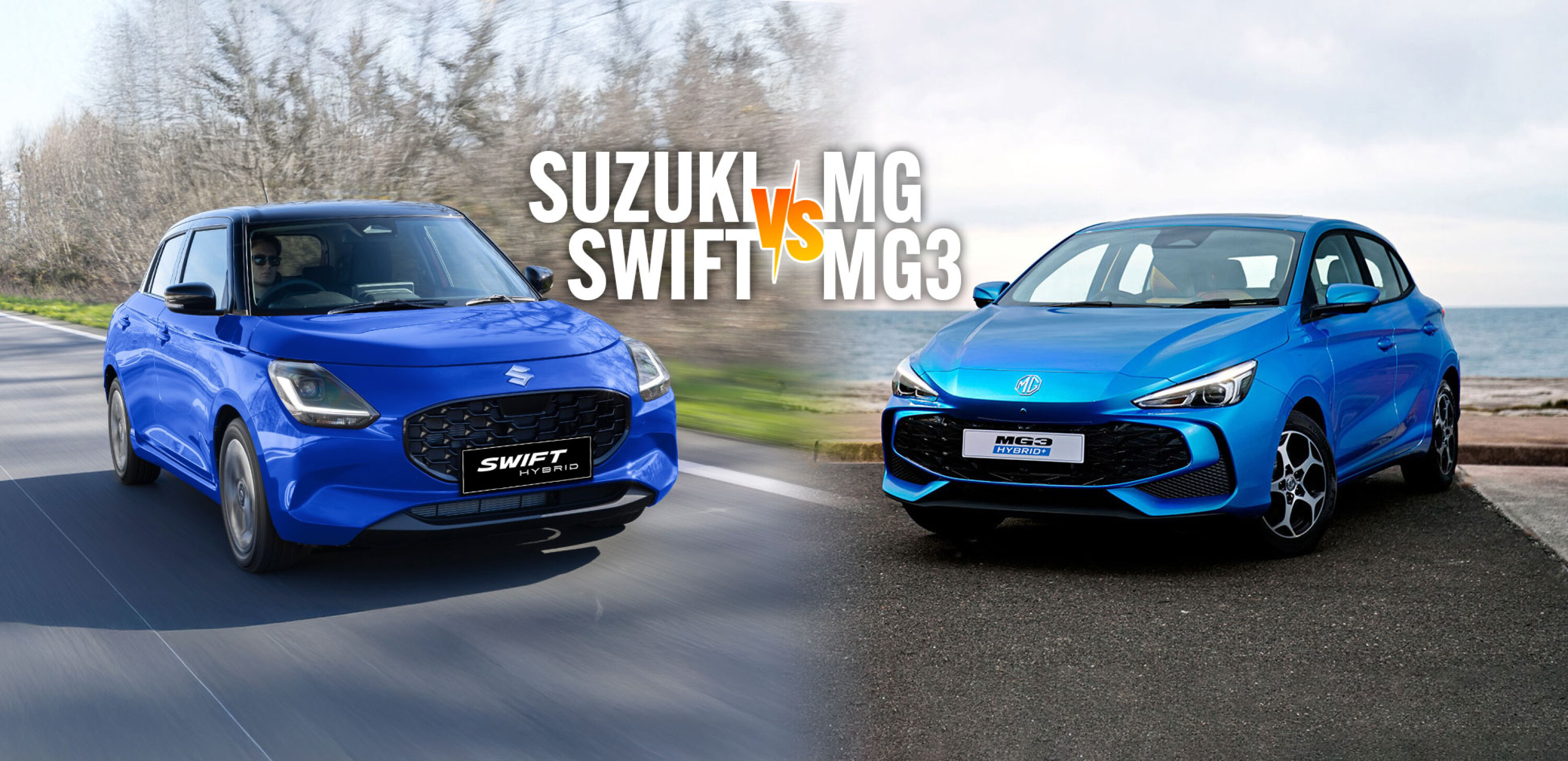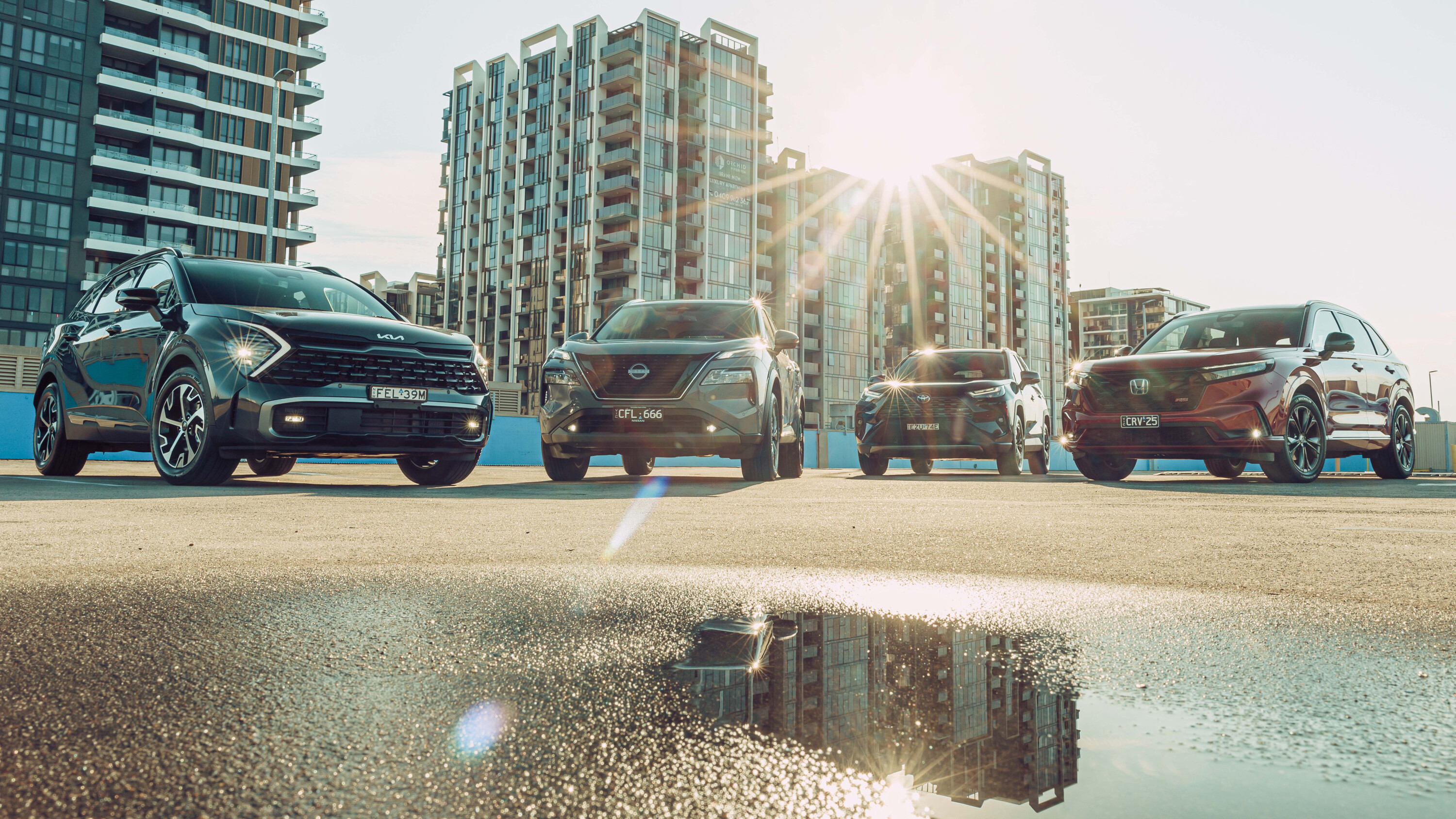Toyota is transforming its 86 sports car into an affordable track weapon for a one-make series in 2016. We pit the road car against the racing 86 to see if it’s earned its stripes.
MOTORSPORT is an addictive and often scarily costly beast. Not everyone can be a member of the lucky sperm club. The wannabes have gotta think smart; seek out the dollar-effective paths to places where the budding racer can holler: “Look at me, I’m bloody good.”
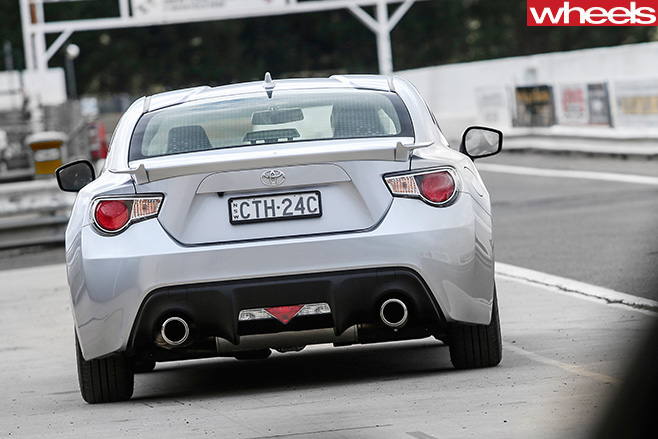
We’re at Wakefield Park Raceway, where the engineering team led by champion driver Neal Bates is finalising the control specification for the 86 coupe to be used in next year’s Toyota 86 Racing Series. My mission is to compare the standard road-going Toyota 86 GTS with the prototype race car. How great are the differences? The series surely has potential, but will it interest the talent-spotters?
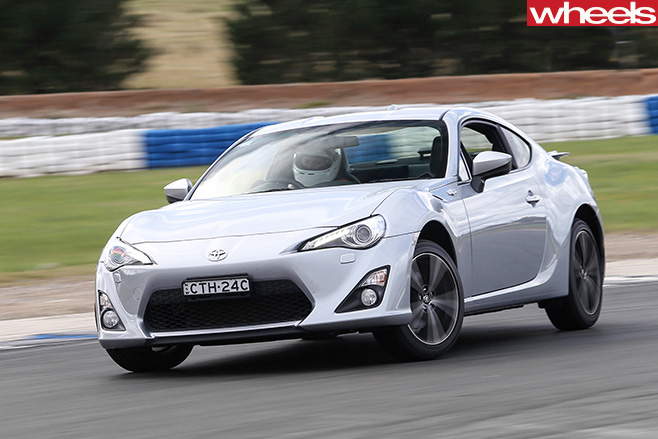
The road car’s weak point on the track is its standard rubber. Turn in too aggressively and the fronts lose adhesion and that legendary balance is replaced with understeer, at least until grip returns and you can use the throttle to kick out the tail and aim the 86 where you want it to go. The lack of torque (which peaks at an almost ridiculous 6600rpm) is noted. The engine is raspy and reasonably keen but the chassis could clearly handle much more from under the bonnet.
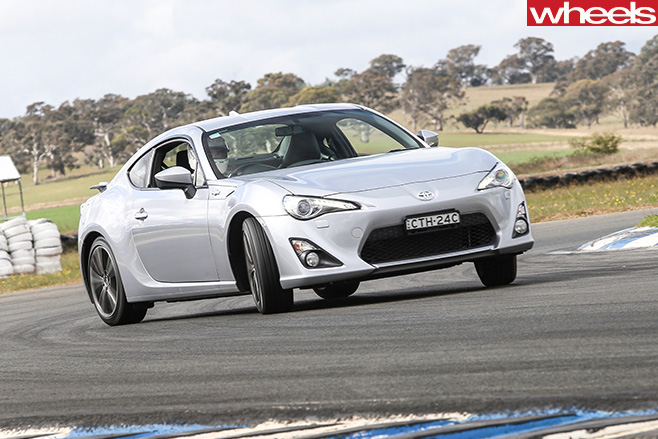
Now for the race prototype. I’m looking forward to this. It’s been too long since I’ve grabbed the wheel of a proper track car.

Immediately I’m impressed by the extra urge, and on the fly it’s loud yet pleasant. The introduction of Motec M150 ECU mapping (which also includes enriching the mixture to better protect the engine) and the mods from the manifolding back have upped the grunt and response. It’s no rocket, but energetic enough for a production-based racer, with dynamics and grip to match. It’s certainly more nimble than a V8 Supercar; maybe more like a Mazda RX-7 of the Group C era.
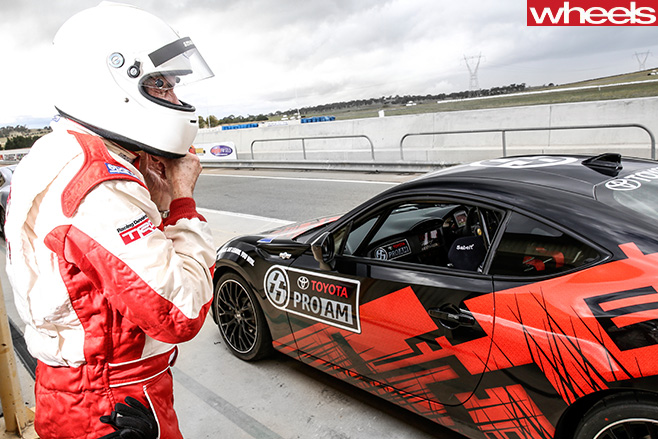
And I’m loving the aurals. Curiously, though, the 86 racer doesn’t sound much like it’s got a horizontally opposed engine, even though it retains the production 2.0-litre Subaru flat-four. Thanks to equal-length header design exhaust and a natural resonance, the noise from the pipes is like a bizarre, distinctive mix of rotary and upright piston engine. The race car engine doesn’t discharge that characteristic offbeat exhaust throb. It positively howls. A full herd of racing 86s should lift grandstand roofs.
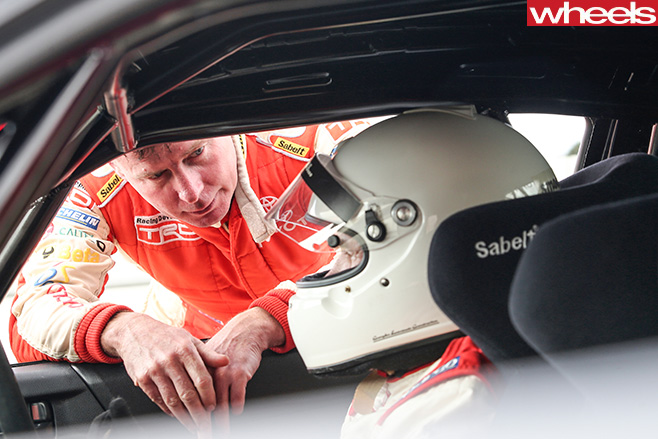
“We want young drivers to learn a lot from the series and not go broke doing it,” explains Neal Bates, who is responsible for the development work. So no force-fed engine mods that would generate lots more power and torque but put unnatural stresses on gearboxes. Instead, the modifications gel sweetly, each contributing in an honest way to a faster, still reliable machine true to its engineering philosophy.
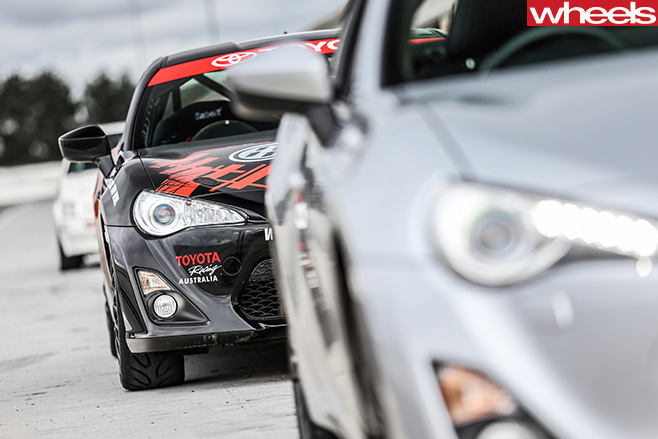
Changes to the suspension (strut front and coil-over rear) are minimal because the standard 86 handles sweetly, but enough to leave the impression that this is a serious track machine. Massaged to suit the modded 86 chassis and attendant roll cage, plus race-spec tyres and brakes, the mandatory handling pack (less than $3000) sourced from MCA Suspension includes stiffer springs and adjustable dampers with 13 positions for bump and rebound. Front camber is driver-adjustable, with a setting of just above three degrees likely to be the popular pick.

Tyre choice was always going to be a crucial element in the race package; the standard Michelin, a competent all-rounder on the street, would not last long on a track. Back-to-backing a selection of different brands has taken much of Bates’ track time and head space. A tyre with predictable yet modest grip levels would put the emphasis on smart driving. Overdriving would usher in mistakes, making overtaking easier. Slicks were ruled out for these reasons, plus the prospect of grippier rubber provoking wheel bearing issues.

I like what I’m feeling from the brake/suspension/tyre package, and in particular the Dunlop rubber. Yes, it does give up if you get too ambitious at turn-in or with the throttle, but I’m not working the steering as vigorously as with the production 86, and the sliding is not as flamboyant. It’s easier to get an easy, metronomic rhythm going.
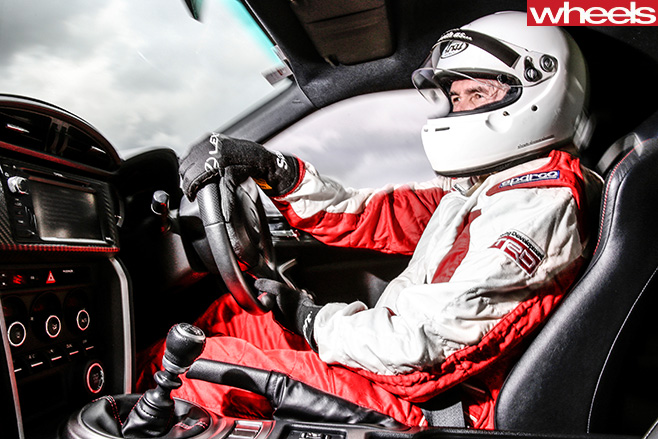
Data taken from both cars confirm our seat-of-the-Calvin-Kleins impressions, even with the occasional light sprinkle of rain perhaps affecting our scientific rigour. While the Motec data logger has reduced an exciting, instinctual and raw experience – that of driving a race car as fast as possible – into a mass of crazy, confusing, wriggly lines, engineer Stephen Dean magically turns them back into a meaningful story.
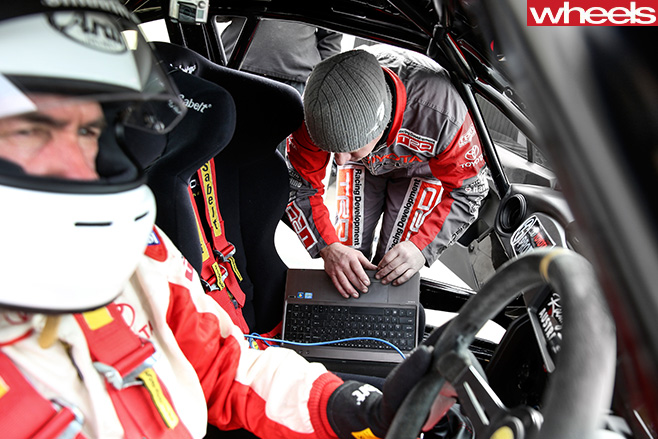
“Throttle pedal traces for the road car show you had to wait longer to get on the throttle exiting corners, with more corrections needed to balance wheel slip, and that you had to lift off earlier into the corners,” he explains. I nod knowingly, managing a sadly inept job of hiding a look of incredulity. “Average throttle position for the lap in the road car is 63.5 percent, and the race car is 76.5 percent – a large difference around such a short 2.2km track with few straight sections.”
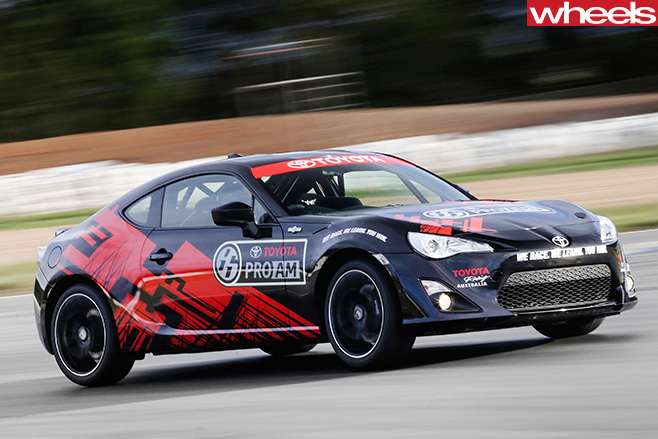
Because it powers-up faster with better traction, this translates into higher terminal speeds on the straights, with the enhanced braking allowing the driver to stomp the pedal later and harder than in the road car. Data analysis reveals the race brakes retain their consistency for longer than the road car’s. Both cars appear to be activating the anti-lock system.
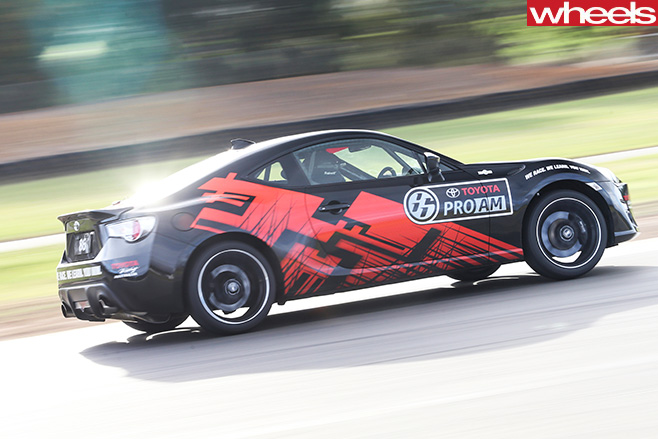
The race 86 is 4.1km/h faster than the road car down the front straight, and 14.5km/h quicker through third-gear first turn. Up the hill at Turn Two it hits 135.9km/h to the regular 86’s 127.7km/h. Heading downhill, the racer is exactly 10km/h faster and maintains a clear advantage in second gear through the left-hand Turn Six. Along the back straight, the track car goes 5.9km/h quicker, but then is beaten by the road car through the tightening, off-camber final corner. The Motec tattletale reveals I got caught out over the bumps, getting too hard into the ABS, then compounding the felony by staying on the stoppers while waiting for the car to settle, leading to the lower apex speed. The GPS trace also shows a wider line through the corner. Bad me.
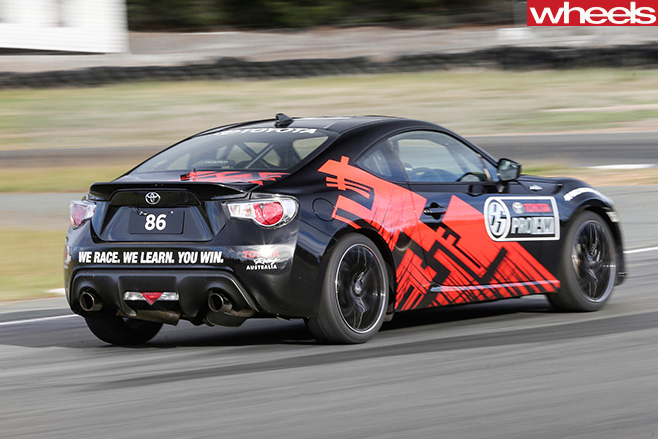
THOUGH it’s an ‘affordable’ and ‘grassroots’ race series to start in 2016, the Toyota 86 Racing Series will appear at selected, mainly marquee, rounds of the V8 Supercars Championship. The big time. Yes, the drivers will be tossed straight into the spotlight at tracks like Sandown and Bathurst in front of large crowds and a live TV audience. No place to hide, but the chance to shine.

Credibility is at stake if the race car does not hit its objectives. Toyota wants it to maintain the fun-first philosophy of the production version but imbued with a harder edge for the track. It also needs to be reliable, cheap to run, demanding of the drivers and, ultimately, uncork something dramatic for spectators and viewers.
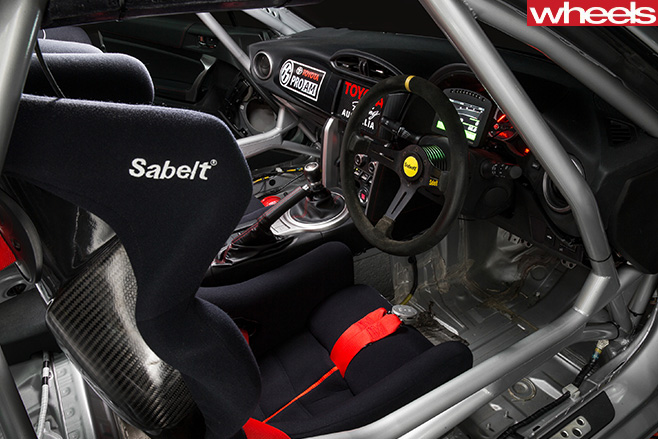
Up to five rounds are anticipated for the inaugural Toyota 86 Racing Series, the ‘pro-am’ show spiced up with the involvement of as many as five professional drivers each race weekend. The selected pros, chosen for their mentoring skills as well as their profile, will provide an on-track yardstick for the wannabes.
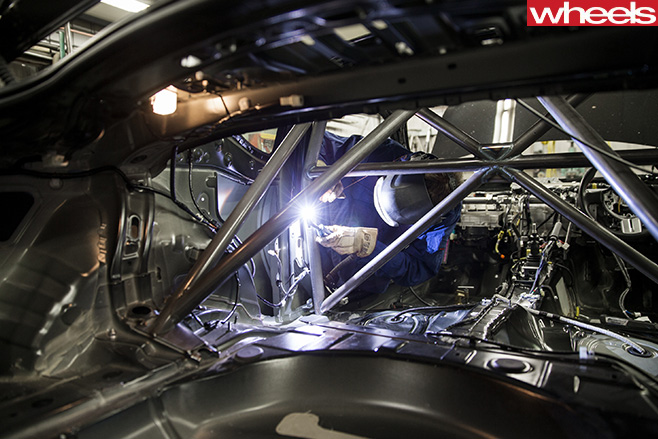

Toyota also has a scheme to give successful locals the chance to contest a global run-off with competitors from similar 86 race series in Japan, Germany and New Zealand.
The inspiration: Toyota’s AE86 racecar
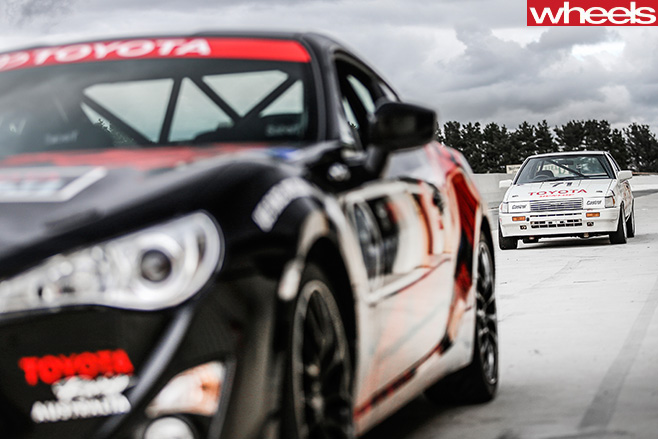
An ex-Toyota Team Australia AE86 – the 1988 Bathurst 1000 class winner – was on hand at Wakefield Park (above). After a few laps, Wheels was reminded that you should never go back to old girlfriends, or revisit old racecars. While redolent of fun times past, it drinks too much, is noisy, recalcitrant, and looks its age.
Why Neal Bates?

Bates is a four-time Australian rally champ, but less well known is his engineering proficiency. He has owned and run his own race/rally prep business Neal Bates Motorsport since 1991. Handily for the development of the 86 for this one-make series, Bates is also an accomplished tarmac racer, with a Bathurst 1000 class win and Targa Tasmania victory to his name.
Key performance figures
| Performance | Toyota 86 race car | Toyota 86 GTS manual |
| Fastest lap | 1min 09.8sec | 1min 14.9sec |
| Max lateral G | 1.56 | 1.08 |
| Average throttle position in one lap | 76.5% | 63.5% |
| Top speed achieved | 147.9km/h | 142.0km/h |
Wakefield park hot lap
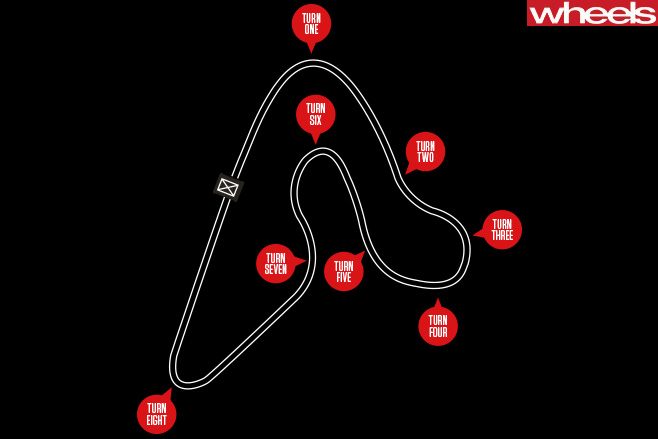
| Hot lap turns | Toyota 86 race car | Toyota 86 GTS manual |
| TURN ONE | 124.3km/h | 109.8km/h |
| TURN TWO | 135.9km/h | 127.7km/h |
| TURN THREE | 114.6km/h | 98.7km/h |
| TURN FOUR | 103.4km/h | 91.8km/h |
| TURN FIVE | 137.5km/h | 130.9km/h |
| TURN SIX | 111.4km/h | 107.5km/h |
| TURN SEVEN | 130.8km/h | 124.8km/h |
| TURN EIGHT | 84.3km/h | 91.6km/h |
Track transition: Eight key changes
BRAKES Pedal feel and stopping performance noticeably enhanced by AP Racing Pro 5000 package with four-pot front calipers and two-pot rears, with bigger rotors.
EXHAUST Sounds brash and growly like a track weapon should. More importantly, bespoke extractors and exhaust contribute to handy 22 percent power and 20 percent torque boost.
TYRES 18-inch 40-series Dunlop Direzza Sport Z2 is road-and-track rubber with improved lateral and braking grip but still with excellent wear qualities. Not bad in the wet, too.
SAFETY Carpet, air-con and cabin trim removed; CAMS-approved roll cage, five-point harness, fire extinguisher added.
DATA LOGGING Optional $3388 Motec C125 race-logging kit/display with programmable shift lights, GPS for track map/lap times, engine warning lights (oil pressure, temperature) or other driver alerts.
HANDLING MCA front and rear damper/spring package with broad adjustability to soften the 86 for wet track conditions, or firm it up for the fastest circuit in Australia, Mount Panorama.
ENGINE MANAGEMENT Motec has remapped and ‘locked’ the EMS so competitors can’t make their own tweaks. Importantly, competitors retain access to data on cornering speeds, braking points, throttle inputs, etc.
AERO Because the two eligible variants, GT and GTS, have different rear wings, a trim TRD spoiler (not fitted to the earlier silver prototype pictured on these pages) is mandated.
SPECS
Model: Toyota 86 GTS Engine: 1998cc flat-four, 16v, dohc Max power: 147kW @ 7000rpm Max torque: 205Nm @ 6400- 6600rpm Transmission: 6-speed manual Weight: 1275kg 0-100km/h: 7.6sec Fuel economy: 7.8L/100km (official), 24.6L/100km (track) Price: $35,990
Model: Toyota 86 race car Engine: 1998cc flat-four, 16v, dohc Max power: 179kW @ 7500rpm Max torque: 246Nm @ 5500-6800 rpm Transmission: 6-speed manual Weight: 1180 kg 0-100km/h: 7.4sec Economy: 31.5L/100km (on track) Price: $100,000 for car and first year racing (estimated)



